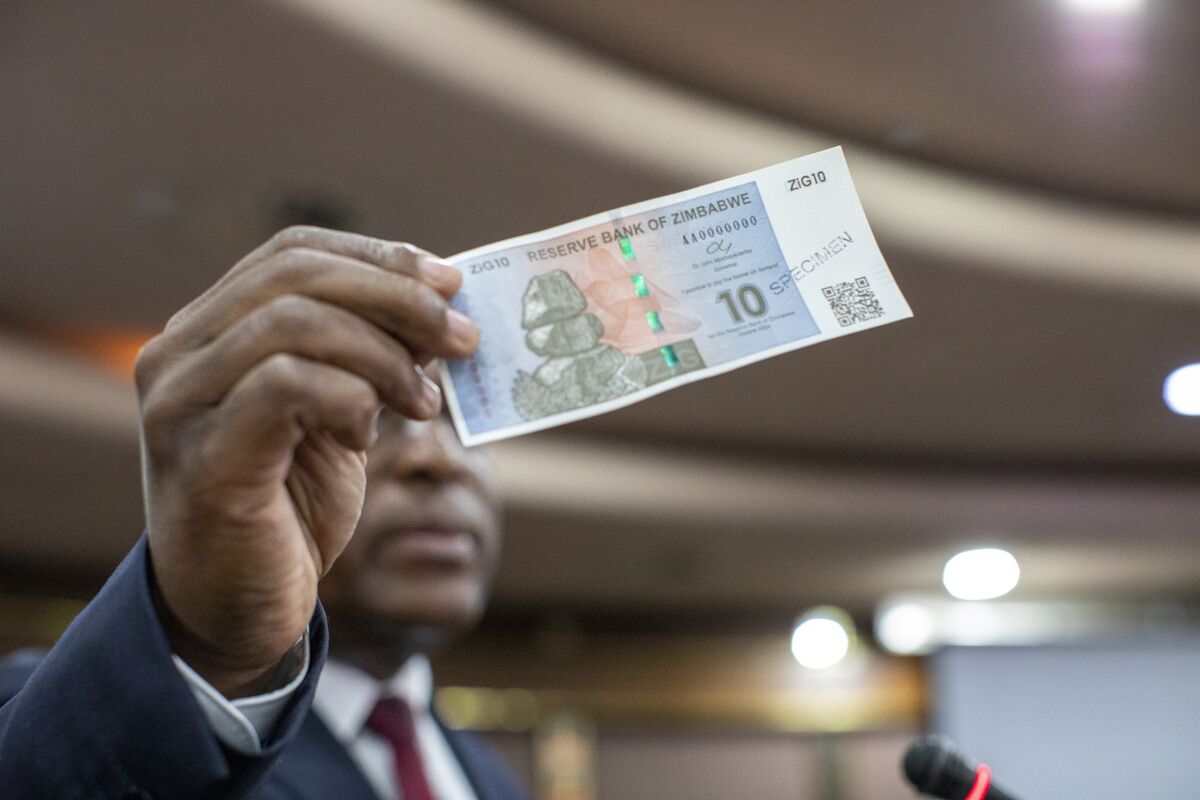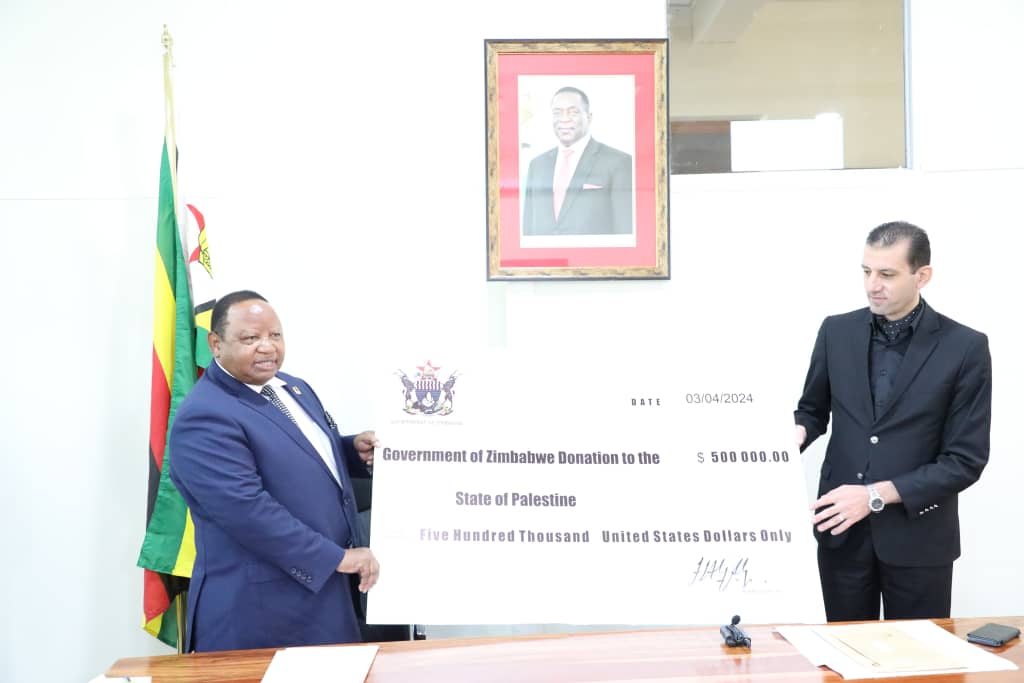With her nine month-old child firmly strapped on her back, Nozipho Moyo (26) staggered with a heavy sack out of one of the many deep pits at Gaika Mine, in Zimbabwe’s central town of Kwekwe, where it is a free-for-all affair for artisanal gold miners.

by Cyril Zenda
It is her tenth load and thankfully the last one. The heavy sacks are full of valuable sand, which everyone in the hereabouts choose to call “gold ore” because desperation makes them trust that among the billions, if not trillions, grains of sand in each sack, a few of them could be precious gold particles. So the next stage for Nozipho and her colleagues in this painful process of hope is to find cheap ways of transporting their prized sacks – which they guard with their own lives – to a nearby stream where they will carefully wash the sand in search of the previous metal.
Hope has kept her going for the past three years… hope of breaking out of the unforgiving vicious circle of abject poverty which is what has been all her life from birth.
“I have seen the lives of many people in my home area of Silobela and elsewhere changing overnight because of this gold and I have this strange feeling that is just a matter of time before I, too, make it,” Nozipho told FairPlanet in an interview while quietening her sickly child with a breast that did not seem to be yielding any milk, given the child’s continued howling. Although she says the child is nine months-old, it doesn’t look like it is over a month old. “She was born prematurely maybe because of the heavy work that I was doing here when I was pregnant, and in addition to that she is not getting enough food,” revealed the equally sickly single mother of three. “She will be well-fed and fine as soon as something comes out of this work,” she added, her face suddenly brightening with hope.
In Zimbabwe’s goldfields, rags-to-riches stories, which inspire many like Nozipho, are everywhere. It is these stories that everyone is eager to share. However there are other equally commonplace stories that Nozipho and her colleagues would wish they remain untold… stories of cruel death that is always stalking these artisanal gold miners. The wanton use of mercury, a highly hazardous substance that virtually all artisanal miners in Zimbabwe use in harvesting gold particles from the ore, is a silent killer that is causing untold devastation among local mining communities and far beyond.
The processing method
At the river, the skilful washing process reduces the several sacks into just a few handfuls of fine sand. It is at this stage that the magic of mercury is summoned. When mercury – the only chemical cheaply available and affordable to the miners – is added to this slurry, it extracts all the gold particles there could be in the sand and sinks to the bottom of the pan. This amalgam is separated, excess mercury and water thrown away, and the matter is taken for smelting in order for the mercury to evaporate, leaving the minuscule amount of gold. The fumes from this smelting process are highly toxic.
In this seemingly negligible way, every year, Nozipho – together with her fellow artisanal gold miners that number hundreds of thousands countrywide – faithfully ensure that at least 80 tonnes of mercury ends up in the water bodies, in the soil, in the air as well as in the human food chain, all with untold consequences.
“We know that it is dangerous but there is nothing we can do because if we avoid delayed death from this mercury, the other option is immediate death from hunger”, Nozipho said – the hope gone from her face – in response to a direct suggestion that her baby’s dubious health condition could be a result of the heavily mercury-polluted environment where she was conceived, born and is trying to grow.
Delicate Balancing Act
Irvine Nyaguwa, a hazardous substances environmental expert said that the fight to eliminate mercury use in Zimbabwe cannot be debated without mentioning the complexity of the mining sector that uniquely has artisanal miners as top gold producers.
“Zimbabwe has a unique set up globally. We have makorokoza (artisanal gold miners) who many of them are into the informal mining sector”, Nyaguwa said. “It is a peculiar situation, hence there is need to encourage them to employ good practices in the use of mercury. A number of livelihoods depend on mining. Despite the widespread usage of mercury by artisanal miners, this sector plays a pivotal role in the country’s economy.”
In 2018 alone, the gold sector produced about 34 tonnes of gold, of which about a third came from these artisanal miners that stand accused of selfishly polluting the environment. This therefore requires a delicate balancing act that ensures that sustainable and viable alternatives be adopted to reduce, limit or even eliminate mercury use without negatively impacting on the gold sector, itself a money-cow for the country.
So important are artisanal miners that in 2015, the government of Zimbabwe decided to decriminalise their activities. The move, with is attendant severe effects on the environment, sought to help the country to earn more from gold exports. So far all indications are that this move, which was informed more by political and economic considerations, has been bearing fruit as the country, which only a few years ago was booted from the London Bullion Market after its gold output had dropped to below three tonnes, is now eyeing an annual gold output of over 100 tonnes by 2023.
Party to Minamata Convention
Economic considerations could also explain why the government of Zimbabwe is not in a hurry to ratify the Minamata Convention which it signed seven years ago, to provide the legal framework to local laws for prevention of its abuse.
The 2013 Minamata Convention, which now has 105 parties and 128 signatories, is an international treaty designed to protect human health and the environment from the human-induced emissions and releases of mercury in an efficient and effective way as part of the gradual move towards complete elimination of this deadly substance. Although contamination could be localised, mercury pollution is a global phenomenon as the chemical moves with air and water, transcends political borders, hence its effects can be felt thousands of kilometres away.
The Minamata Convention is named after the Japanese city of Minamata, which experienced a severe, decades-long incidence of mercury poisoning after industrial waste water from a factory, was discharged into Minamata Bay. The local people who consumed seafood from Minamata Bay became very sick, while several others died or were disabled.
Some of the effects of mercury on humans include nervous system shattering, damage to internal organs such as kidneys, contamination of mothers’ breast milk, children born with deformities among others.
Intervention
Concerns over this problem has resulted in the United Nations Development Programme (UNDP) engaging the Zimbabwean government in coming up with a project that seeks to identify and solve some of the key challenges facing small-scale gold miners in their effort to achieve maximum gold production. Preliminary research by the UNDP discovered that 96 percent of artisanal gold miners in Zimbabwe use mercury.
Findings of studies by consultants from the University of Zimbabwe showed widespread unsafe use of mercury acquired through legal and illegal means by artisanal miners.
Dr Farai Mapanda, who headed the team of consultants from University of Zimbabwe, said a toolkit designed by the United Nations showed that there has been increasing use of mercury over the years.
“According to the toolkit, what we have found out is that from 2012 to 2018 the amount of mercury being used and released into the environment has been increasing every year,” Dr Mapanda told a National Action Plan and Minamata Initial Assessment meeting.
It is yet to be seen if the initiatives being taken in Zimbabwe would make any significant contribution to the common global goal of attaining effective and sustainable way of eliminating the use of mercury by 2022, just two years away.-Fairplanet






